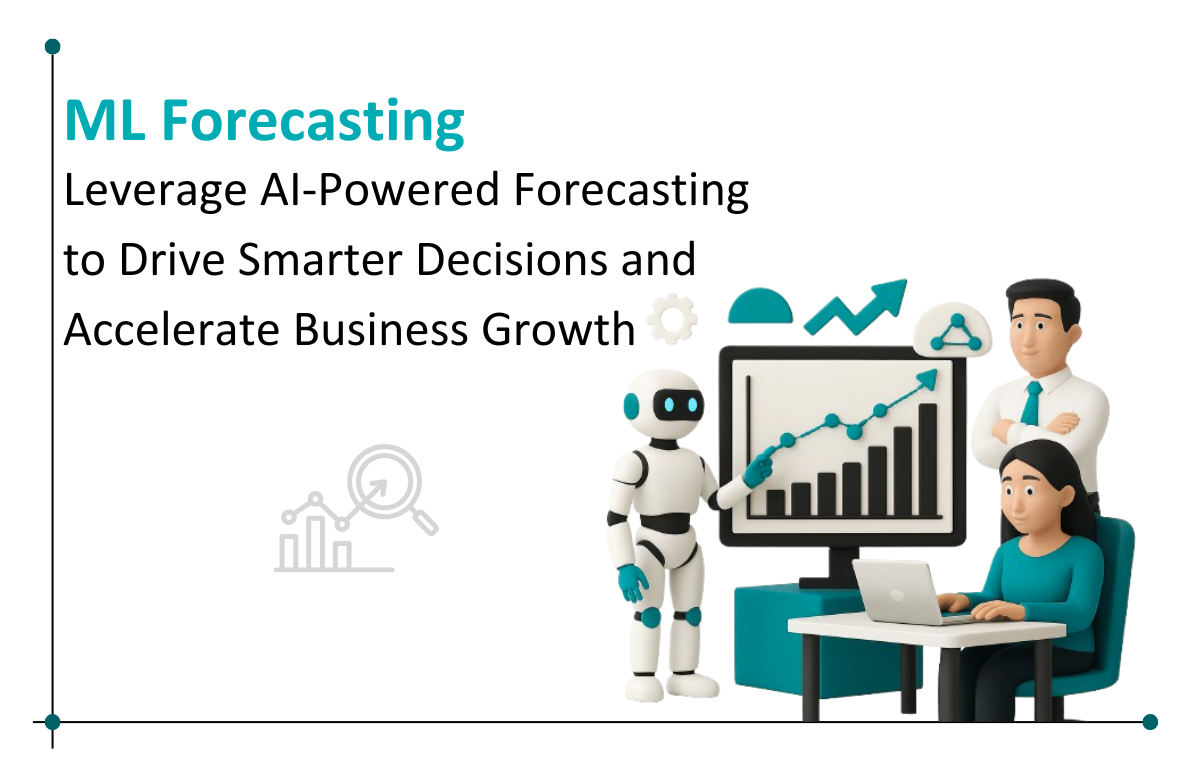
Technology is rapidly transforming the way businesses operate. Companies are leveraging artificial intelligence (AI) and machine learning (ML) to gain a competitive edge and drive innovation. Among the many applications of AI-ML, business forecasting is a game-changer.
Predictive analytics powered by ML helps businesses make data-driven decisions, reduce risks, optimize operations, and anticipate market trends. This blog explores how machine learning forecasting acts as a catalyst for business growth and why enterprises should integrate it into their decision-making processes.
Business forecasting involves predicting future trends, behaviors, and events based on historical data. Traditional forecasting models often fail to keep up with today’s dynamic markets. However, machine learning forecasting provides more accurate, adaptive, and efficient predictions, helping businesses stay ahead of the curve.
ML-based forecasting empowers businesses with predictive insights, allowing them to anticipate customer demands, optimize inventory, and make strategic decisions. This foresight helps businesses outperform competitors.
By analyzing vast amounts of structured and unstructured data, ML models provide actionable insights, helping businesses make data-driven decisions instead of relying on intuition.
ML forecasting minimizes errors by continuously learning from past data and refining predictions. This is especially useful in industries like finance, healthcare, and supply chain management, where accuracy is critical.
Unlike traditional forecasting methods, ML models can quickly adjust to changes in customer behavior, economic conditions, and emerging trends, ensuring businesses remain agile.
By predicting demand and streamlining operations, ML-based forecasting helps businesses allocate resources efficiently, reduce wastage, and cut operational costs.
1. Supply Chain & Logistics Optimization
In supply chain management, machine learning forecasting enhances demand prediction, inventory optimization, and logistics efficiency. Businesses can prevent overstocking or understocking by accurately forecasting demand, reducing storage costs, and improving customer satisfaction.
2. Financial & Revenue Forecasting
ML models predict financial trends, revenue fluctuations, and market risks, allowing businesses to plan budgets, investments, and financial strategies effectively. Financial institutions use ML forecasting for fraud detection, risk assessment, and stock market predictions.
3. Demand Forecasting for Retail & E-commerce
Retailers and e-commerce platforms use ML-driven demand forecasting to optimize pricing strategies, predict consumer trends, and improve supply chain operations, ensuring they meet customer demand without excessive stockpiling.
4. Predictive Maintenance in Manufacturing
Manufacturers leverage ML forecasting to predict equipment failures before they occur, minimizing downtime and reducing maintenance costs. This proactive approach enhances operational efficiency and productivity.
5. Healthcare & Patient Outcome Prediction
In the healthcare industry, ML forecasting is used to predict disease outbreaks, patient admission rates, and treatment outcomes. This enables hospitals to allocate resources effectively and improve patient care.
To successfully integrate machine learning forecasting, businesses must follow a structured approach:
Identify what you aim to achieve with ML forecasting—whether it’s optimizing inventory, predicting sales, or managing financial risks.
Ensure high-quality data by gathering historical and real-time data from reliable sources. Data cleaning and preprocessing are essential to remove inconsistencies and improve model accuracy.
Select an appropriate machine learning model based on your business needs. Common models include:
Use historical data to train the model and validate it with test datasets. Continuously monitor performance and make improvements to enhance accuracy.
Once validated, integrate the ML model into your business operations. Automate data pipelines for real-time insights and scale the solution based on evolving business needs.
Machine learning forecasting is revolutionizing how businesses plan, strategize, and operate. By leveraging predictive analytics, companies can gain a competitive edge, enhance decision-making, and drive sustainable growth.
At Seaflux, we specialize in AI and ML-driven business solutions that empower enterprises worldwide. Interested in leveraging machine learning for business forecasting? Schedule a meeting with us to explore innovative AI-powered strategies tailored to your needs.

Business Development Executive